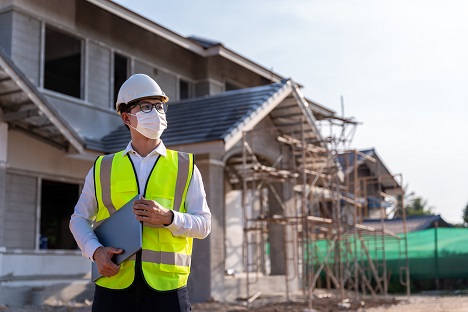It’s clear… The United States has another major housing problem.
But this time, the problem is different from the massive housing bubble of 2008.
In 2008, unregulated private mortgage lending and markets were to blame.
When that bubble popped, the fallout was so big that it almost brought down the entire global financial system.
This time, our problem is that we simply don’t have nearly enough houses.
A new report from the National Association of Realtors has quantified the problem for us.
This report estimates that the United States home shortage currently sits at 5.5 million.
When you consider that the entire homebuilding industry builds only 1.5 million homes a year, a 5.5 million home shortage is a big one.
It’s going to take us a long time to make up that deficit.
Undoubtedly, the housing shortage is large – and it’s having an impact.
The median sales price for a home in the U.S. increased by 20% from $310,000 in April 2020 to $372,000 in April 2021.
With housing prices now skyrocketing across the country, this housing shortage story is now going mainstream.
It is a story that you have been well ahead of the curve on as a reader of Wealthy Retirement.
More than a year ago, I explained why I was extremely bullish on homebuilder stocks.
Here’s what I said:
New home construction since the housing crisis is at its lowest level in 60 years.
From 1960 to 2008, the number of new homes built in the U.S. ranged from 1 to 2 per 100 households.
Since 2008, that number has been just 0.5 new homes per 100 households – roughly half the bottom end of the normal range…
Homebuilders were overly aggressive in the lead-up to the implosion of the housing bubble. Burned by that experience, the industry modified its behavior too far in the other direction.
In fact, it overadjusted so much that we are now looking at the creation of a new kind of housing crisis… not enough new homes!
Long term, this kind of problem is bullish for homebuilders…
According to Realtor.com, nearly 10 million new households have been formed in the United States since 2012. Meanwhile, only 5.9 million single-family homes have been built during that time.
Pent-up demand is growing, and there is not nearly enough housing supply to satisfy it.
Once we get past the COVID-19 crisis, it is going to require years of elevated levels of new homebuilding to catch up.
This is the exact blueprint we were looking for: a sector with short-term challenges and terrific long-term prospects.
With the benefit of hindsight, this opportunity from last spring now appears so obvious.
Of course, with the economy imploding due to COVID-19 shutdowns at the time, it was anything but.
My preferred way to exploit this opportunity has been to own all of the homebuilders through the SPDR S&P Homebuilders ETF (NYSE: XHB).

Since May 2020, the homebuilding sector has tripled the performance of the S&P 500 and posted a phenomenal one-year return.
I Still Like Homebuilders, Especially This One
With the surge in stock prices, the homebuilding sector isn’t quite the no-brainer that it was a year ago.
But I still like these companies because the U.S. needs a massive number of new homes.
This industry appears to have years of growth ahead of it.
The National Association of Realtors report estimates that in order to fill the underbuilding gap of 5.5 million homes, the country needs to build at least 2 million new homes per year in the next 10 years.
That is a big increase on the current pace of homebuilding in the country that has been trending at about 1.3 million new homes per year.
To get to 2 million new homes per year, the homebuilding industry needs to pick up the pace of building by 60% per year.
Would it be good for homebuilder earnings if these companies started selling 60% more homes each year?
Yes, of course it would.
When you hear from me next, I’ll tell you which homebuilding stock is my favorite.
Even better, I’ll tell you how you can buy shares of this company at a 25% discount to the price other investors are paying.
Good investing,
Jody

